Today’s CometWatch entry features three images taken over a forty-minute span on 12 August 2015, one day before the perihelion of Comet 67P/Churyumov-Gerasimenko. They were taken by Rosetta’s NAVCAM at 336 km from the comet; the images have an average resolution of 28.7 m/pixel and measure about 29.3 km across.
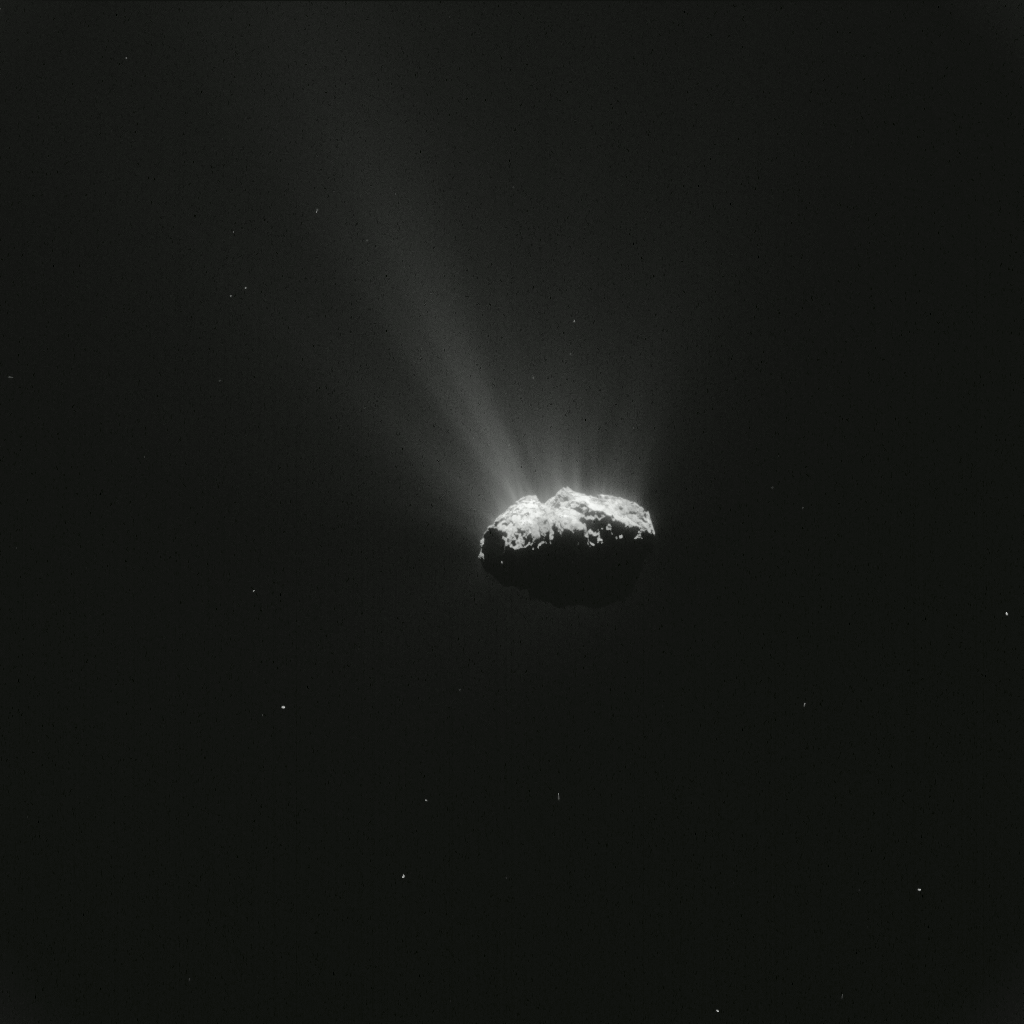
Sequence of three NAVCAM images (with contrasts enhanced) of Comet 67P/C-G taken on 12 August 2015, 336 km from the comet centre. Credits: ESA/Rosetta/NAVCAM – CC BY-SA IGO 3.0
The images were processed to enhance the comet’s activity, and are presented here as an animated GIF file. Another animated file was compiled with the three unprocessed images, revealing more details on the nucleus surface. The individual images, both processed and in the original version, are provided below.
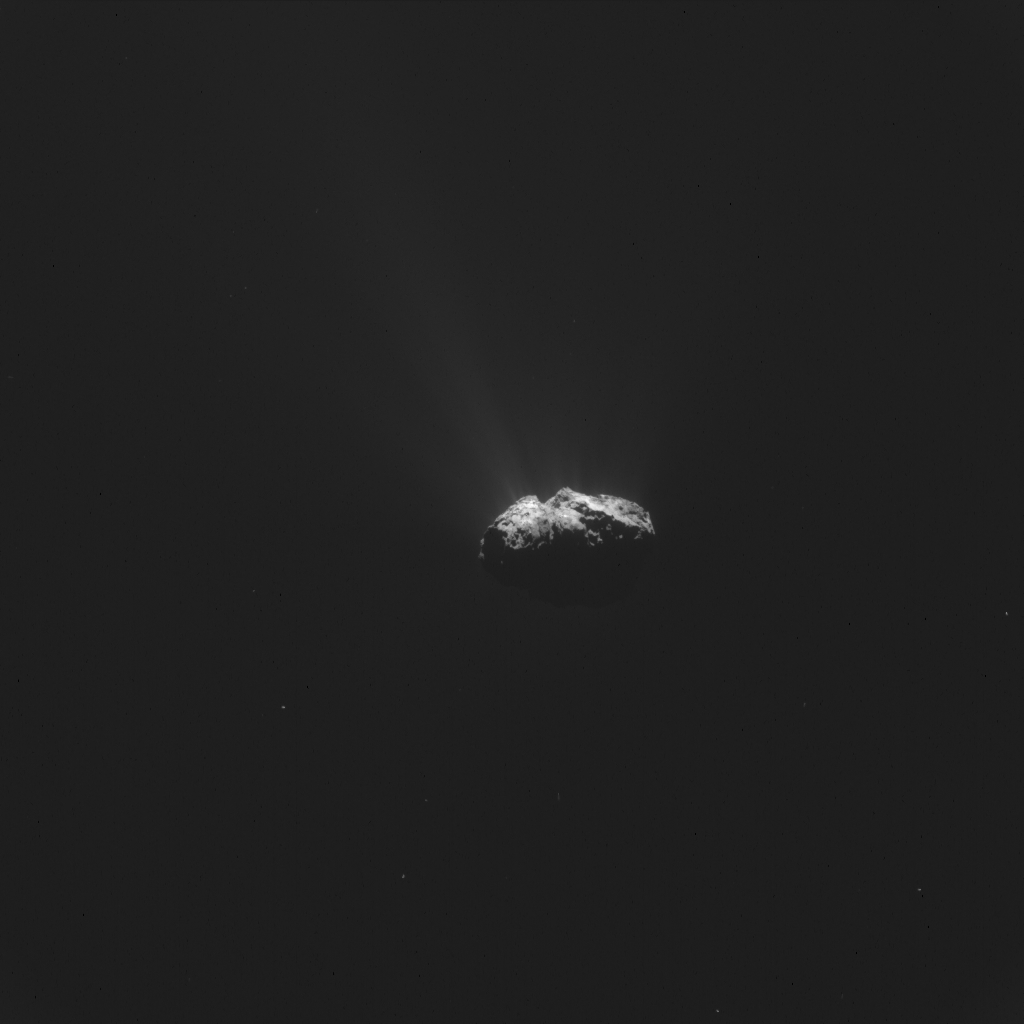
Sequence of three NAVCAM images of Comet 67P/C-G taken on 12 August 2015, 336 km from the comet centre. Credits: ESA/Rosetta/NAVCAM – CC BY-SA IGO 3.0
In this orientation, the comet appears with the small lobe on the left and the large lobe on the right. The sequence of images gives a hint of the rotation of Comet 67P/C-G, which takes about 12.27 hours to complete a full spin.
On the small lobe, we can see parts of the Ma’at, Serqet and Nut regions, while the large circular depression known as Hatmehit is cast in shadow; the smooth terrains of Anubis dominate the view of the large lobe.
The original 1024 x 1024 images used in today’s CometWatch animation are provided below:

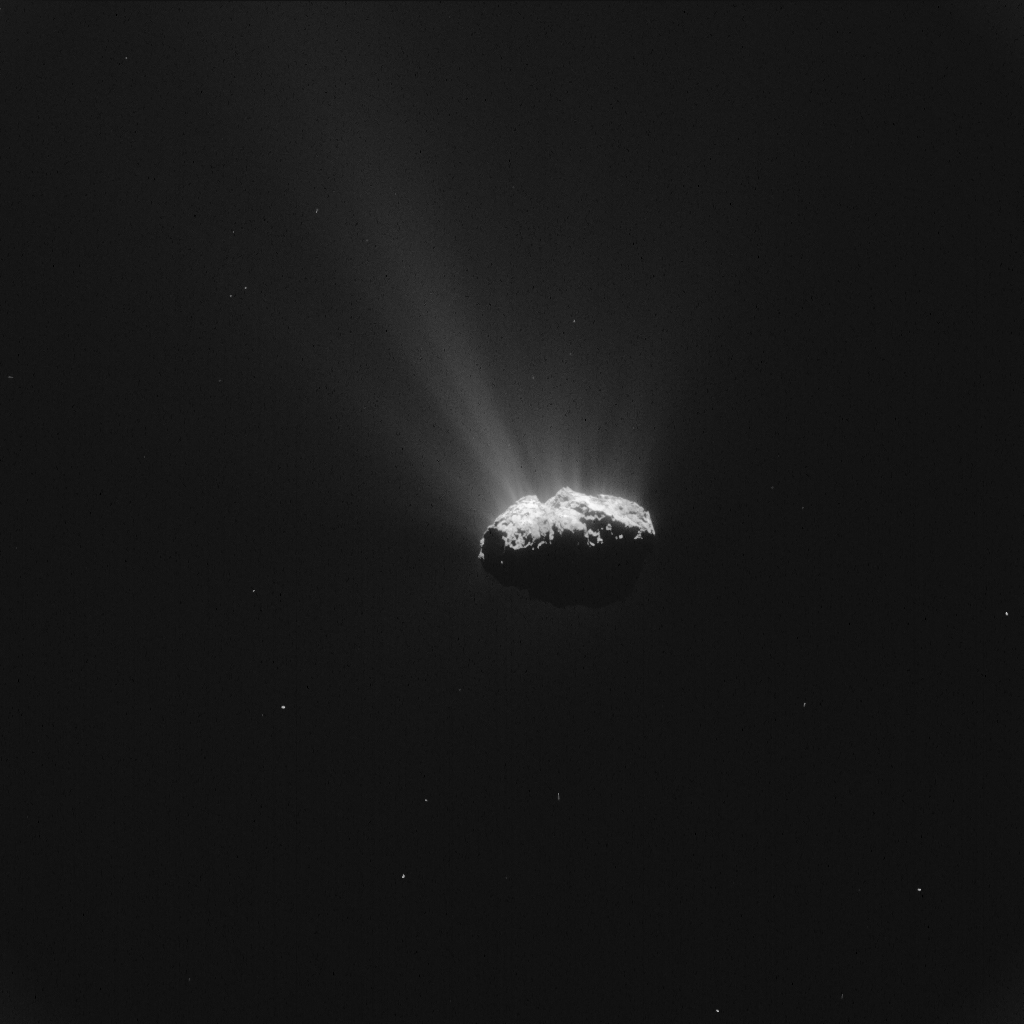
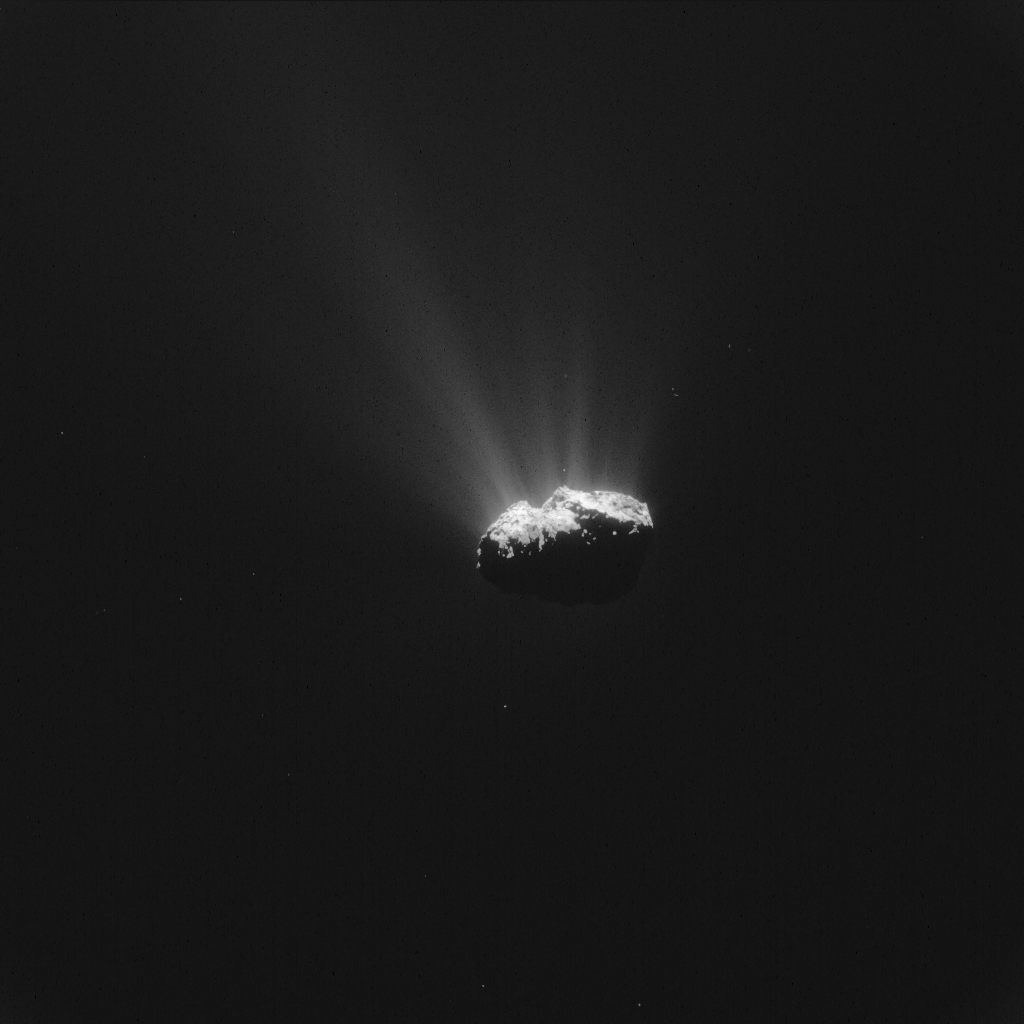


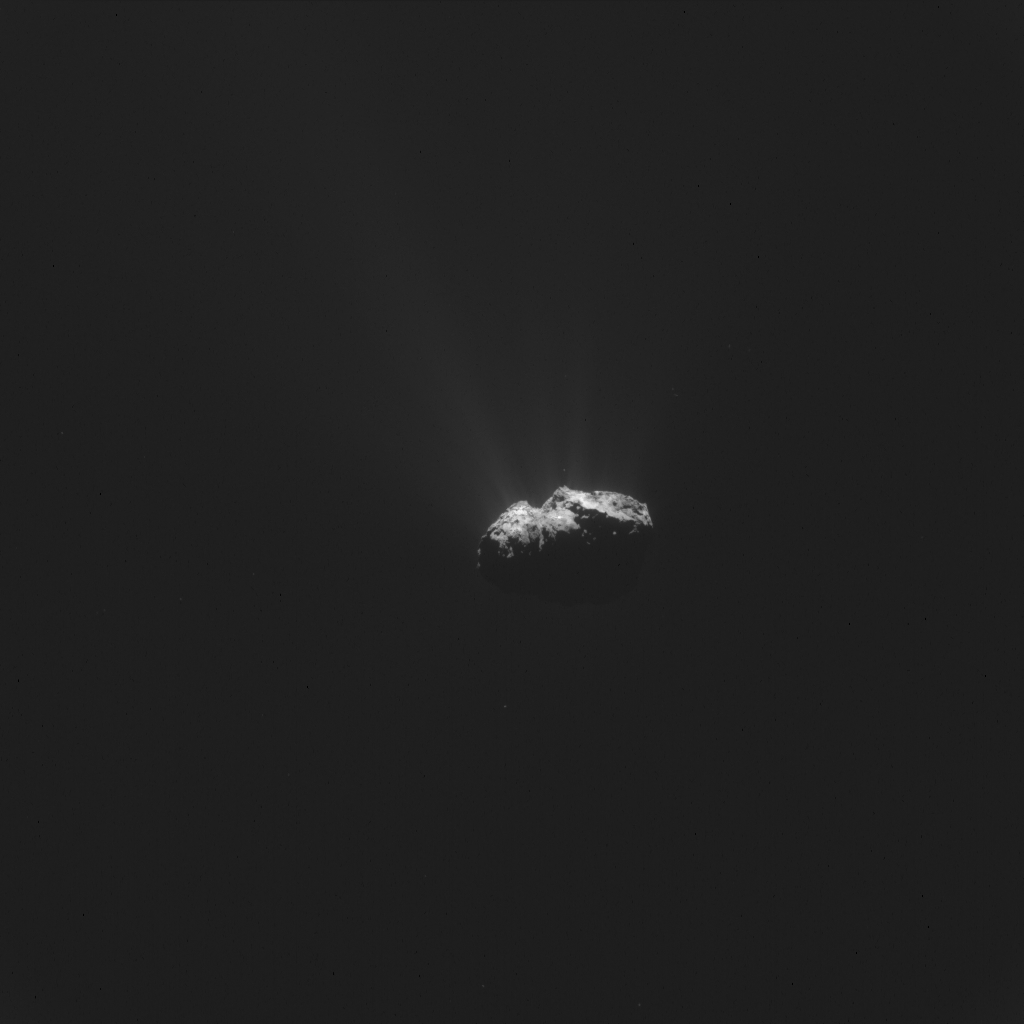
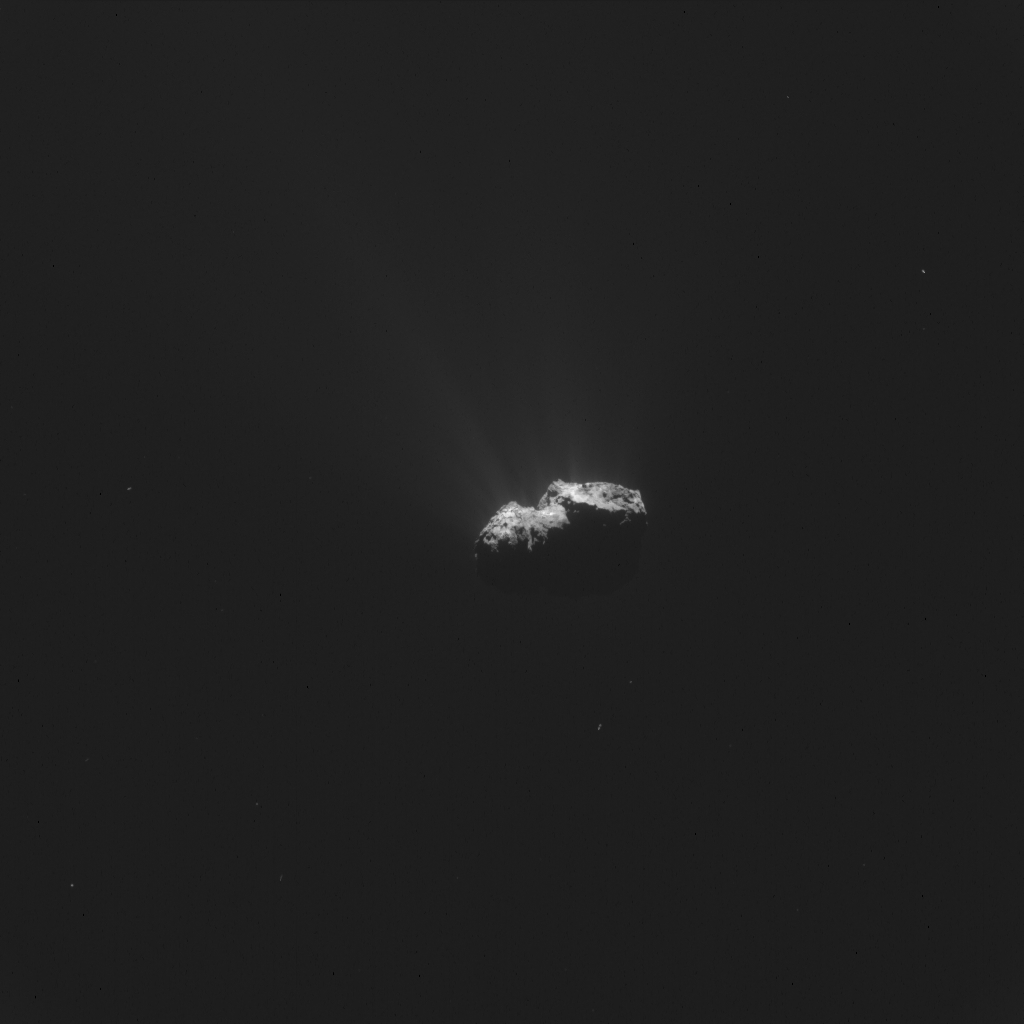








Discussion: 3 comments
Evident at this GIF some fixed linear and granular noise. As if looking at the sequence through a silky, black tight. Part of Emily’s background noise.
Harvey’s ‘Percolating’ dust suggested at the bottom horizon, just illuminated by the now relevant dusk light.
https://www.esa.int/spaceinimages/Images/2015/08/Comet_on_12_August_2015_NavCam_Animation
With this sequence we can see that there is no observable curvature to the jets despite the rotation of the comet. This confirms in my mind that the material in the jets is moving PDQ. Views?
Rotation is just 1/12h, and size of the ‘jet crown’ should be around 3km. This is no proof, but would dare with you that they are accelerating PDQ [electrons/ions within].